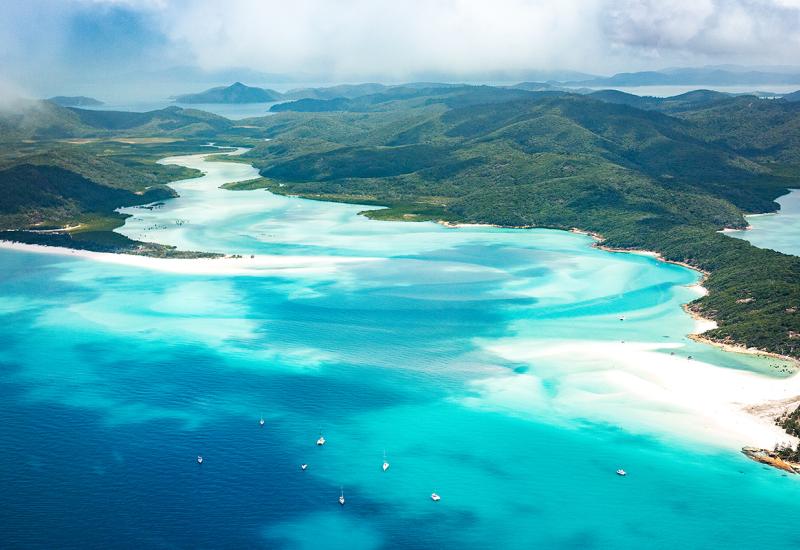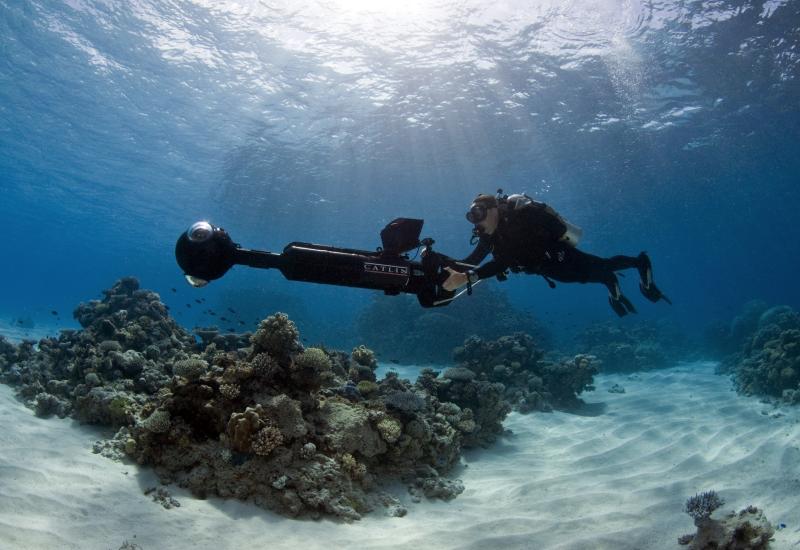Top 10 Raja Ampat Dive Sites
Raja Ampat means “Four Kings” in the Indonesian language, and it refers to the four main islands (amongst many islets) that dot the sea in this beautiful, eastern region of Indonesia. And it is diving fit for a king – epic biodiversity, healthy and luscious hard and soft coral gardens, big animals and wonderful macro opportunities. The area around Misool can be dived from land-based operations in the region, but probably the best way to dive this part of the world is from a live-aboard vessel.
Our trip was a 10-day transition cruise. We embarked at Ambon island and dove our way across to Sorong, located in the most eastern province of Indonesia – Papua. We dove the south portion of the area of Misool on our voyage. Raja Ampat itinerary boats more typically depart and return from Sorong, and spend more time in Misool, where the diving is superb.
There are still many more sites to the north that we didn’t have the opportunity to explore on our trip, including the infamous Blue Mangrove where crocodiles are known to lurk! Reasons to return …
Melissa’s Garden

Judy GMelissa’s Garden
This is a tasselled wobbegong shark (Eucrossorhinus dasypogon). Sadly, due to apparent over-fishing for the shark fin trade, there are just not very many sharks to be seen in Indonesia these days. On this trip, less than a handful were spotted by our group, but we were all thrilled to have the opportunity to see two of these bottom-dwelling wobbegong sharks, on two separate sites.
Manta Sandy
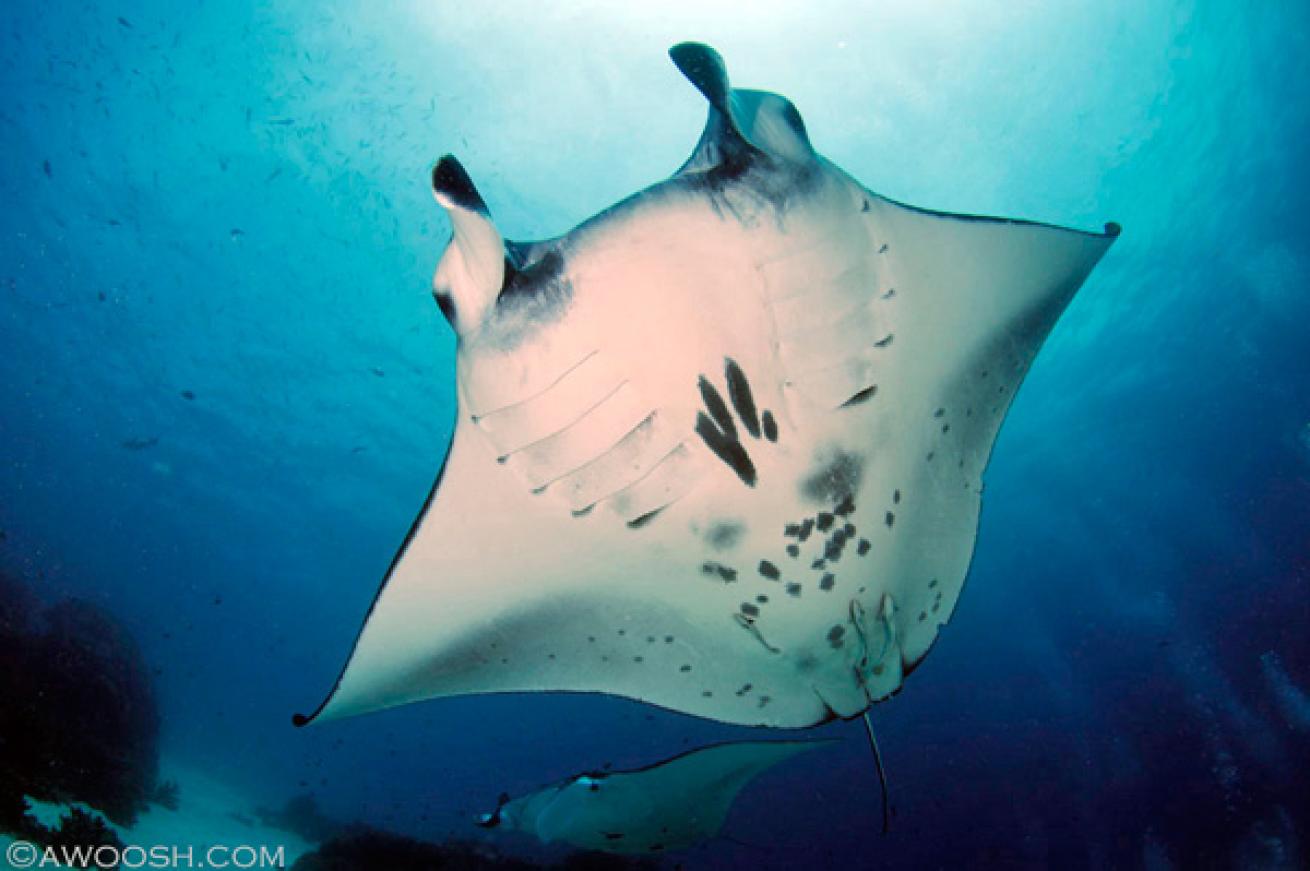
Judy GManta Sandy
This is another signature Raja Ampat site. It can be hit or miss whether the mantas will show up at this cleaning station, but when they do, they often arrive in squadrons!
Black Rock

Judy GBlack Rock
Gorgeous soft coral gardens and schooling fish were the highlights of this site in the Misool area. The name of the site comes from the pointed rock above the surface that marks the reef.
Boo Rock
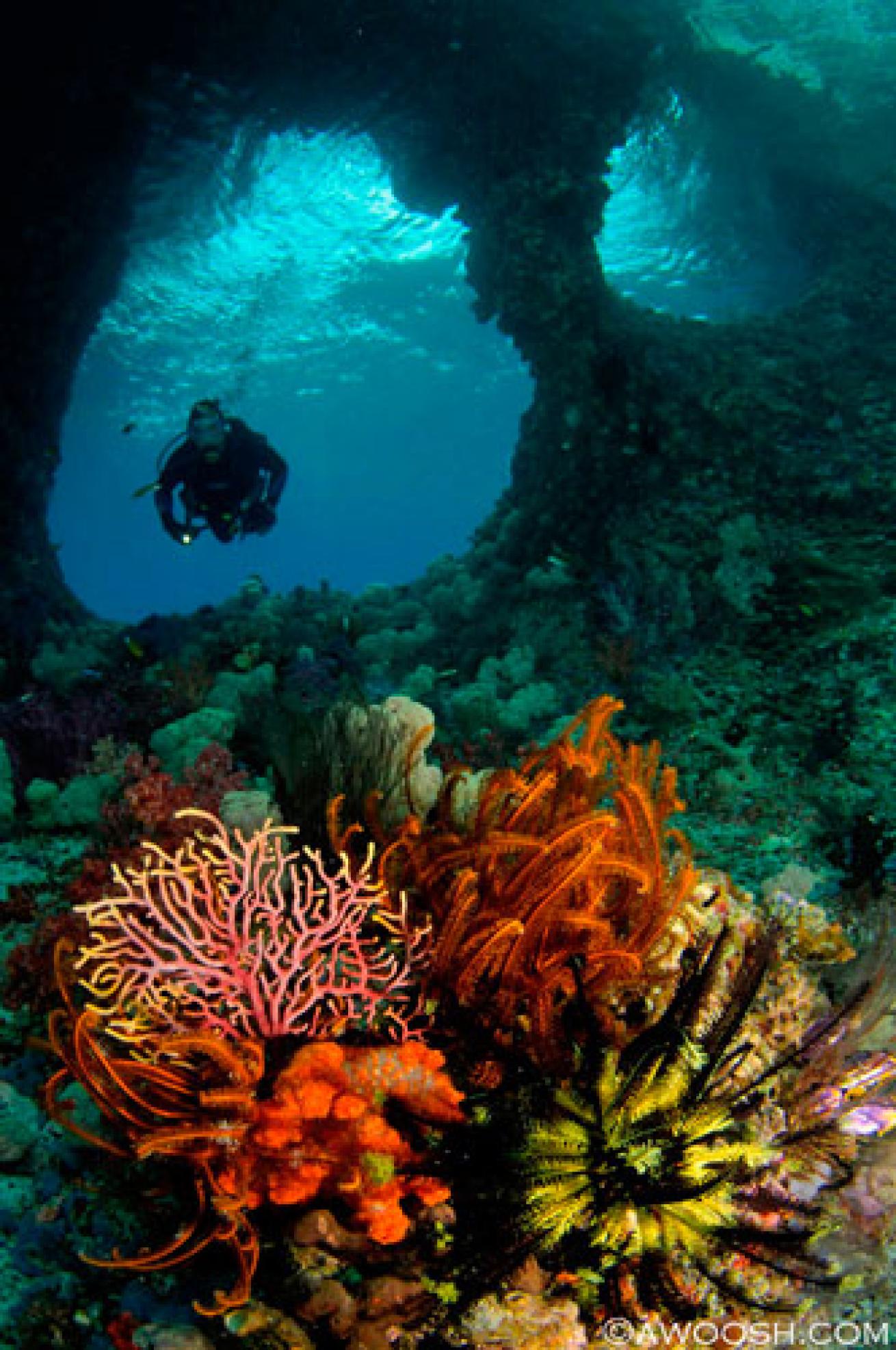
Judy GBoo Rock
One of the signature dives of this part of Indonesia. The name of the site comes from the two swim through “eyes” in the reef. Here we were also treated to seeing schools of pinnate batfish and yellow striped grunts.
Caves
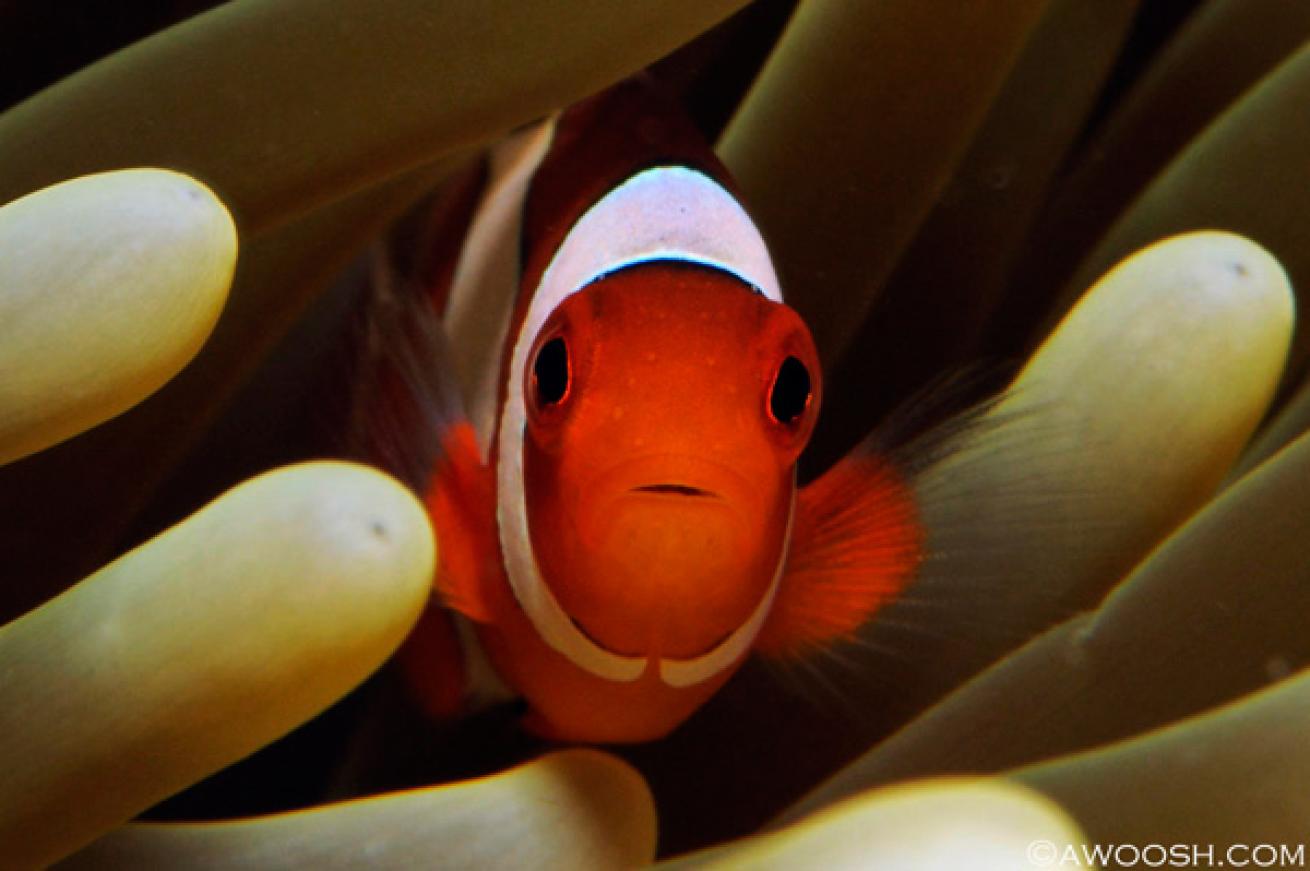
Judy GCaves
This is a juvenile spinecheek anemonefish (Premnas biaculeatus). Quite a tiny fish at this stage of its life – about 1.9 centimetres long.
Kaleidoscope

Judy GKaleidoscope
This site truly is a kaleidoscope of color and fishiness. There is also a moody rocky overhang that dominates the reef.
Muck Bay (1 of 2)

Judy GMuck Bay (1 of 2)
This is an ornate ghost pipefish (Solenostomus paradoxus), which is about 5 centimetres long. We were lucky to be given an entire day to just putter in a large “mucky” bay, on an unpopulated island in the southern Misool region. Sites known for muck diving have a sandy or silty bottom. There may not be pretty corals decorating the seascape, but these sites are often rich with macro critters, and Muck Bay is no exception.
Muck Bay (2 of 2)
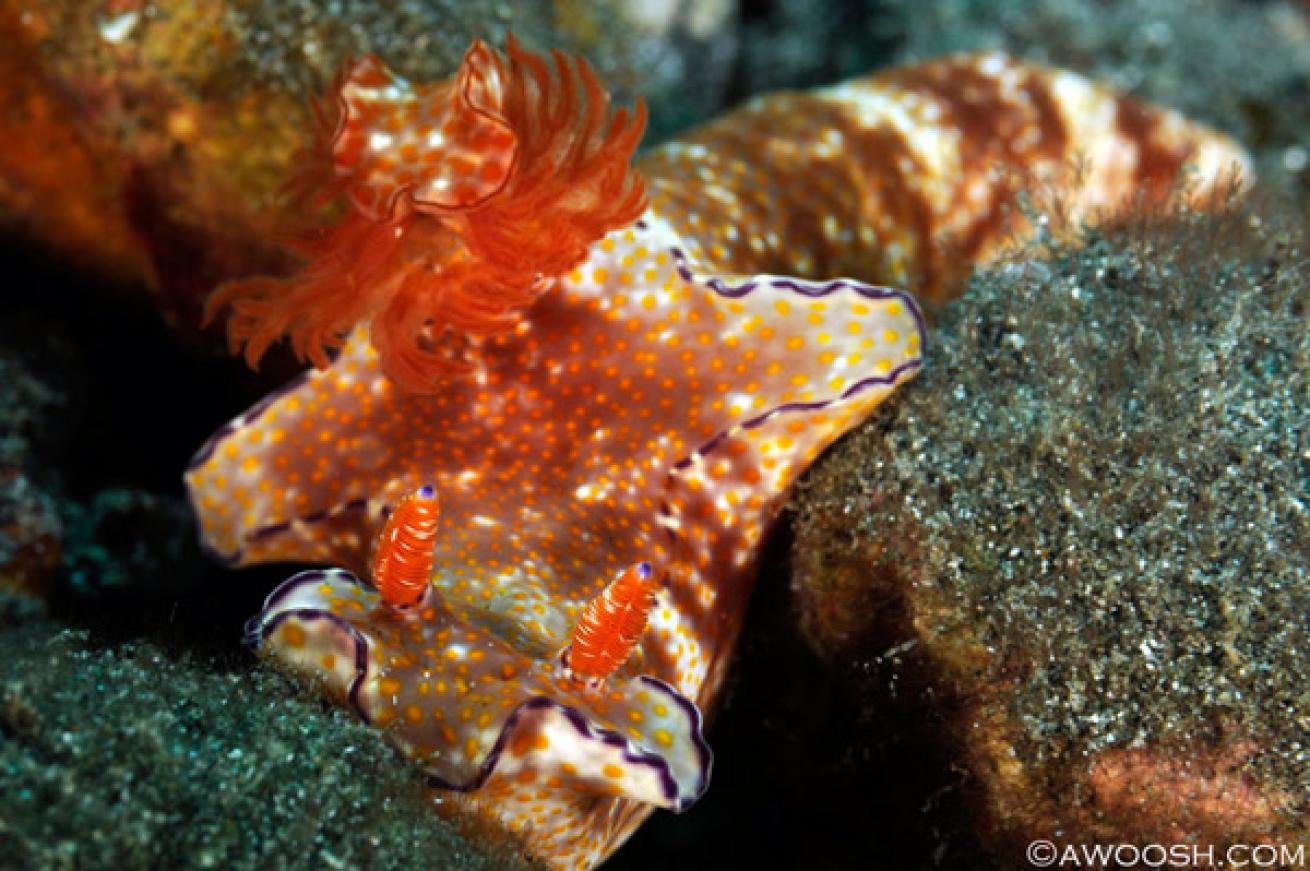
Judy GMuck Bay (2 of 2)
This is a Ceratosoma tenue nudibranch, which is a relatively big nudibranch, at about 7.6 centimetres long. This was also found at Muck Bay. With an open gate on the boat, we were permitted to dive for as long as our air and computers would let us. It was quite a shallow site (about 10-metre maximum depth) and devoid of current, so some of us managed to bag several two-hour-plus dives! Heaven …
Neptune’s Fans

Judy GNeptune’s Fans
A pygmy seahorse (Hippocampus bargibanti). Every macro photographer wants to bag a shot of one of these pygmy seahorses. They are very tiny – about the size of a cooked grain of rice. A lot of patience is required to get the shot, and care needs to be taken to limit the number of attempts, as it is clear that these cute little critters are very sensitive to the strong light of the strobe, and the sea fans they live on are very fragile. This site has sheer walls paved with very colourful sea fans, some of which host these tiny seahorses.
South Mangrove
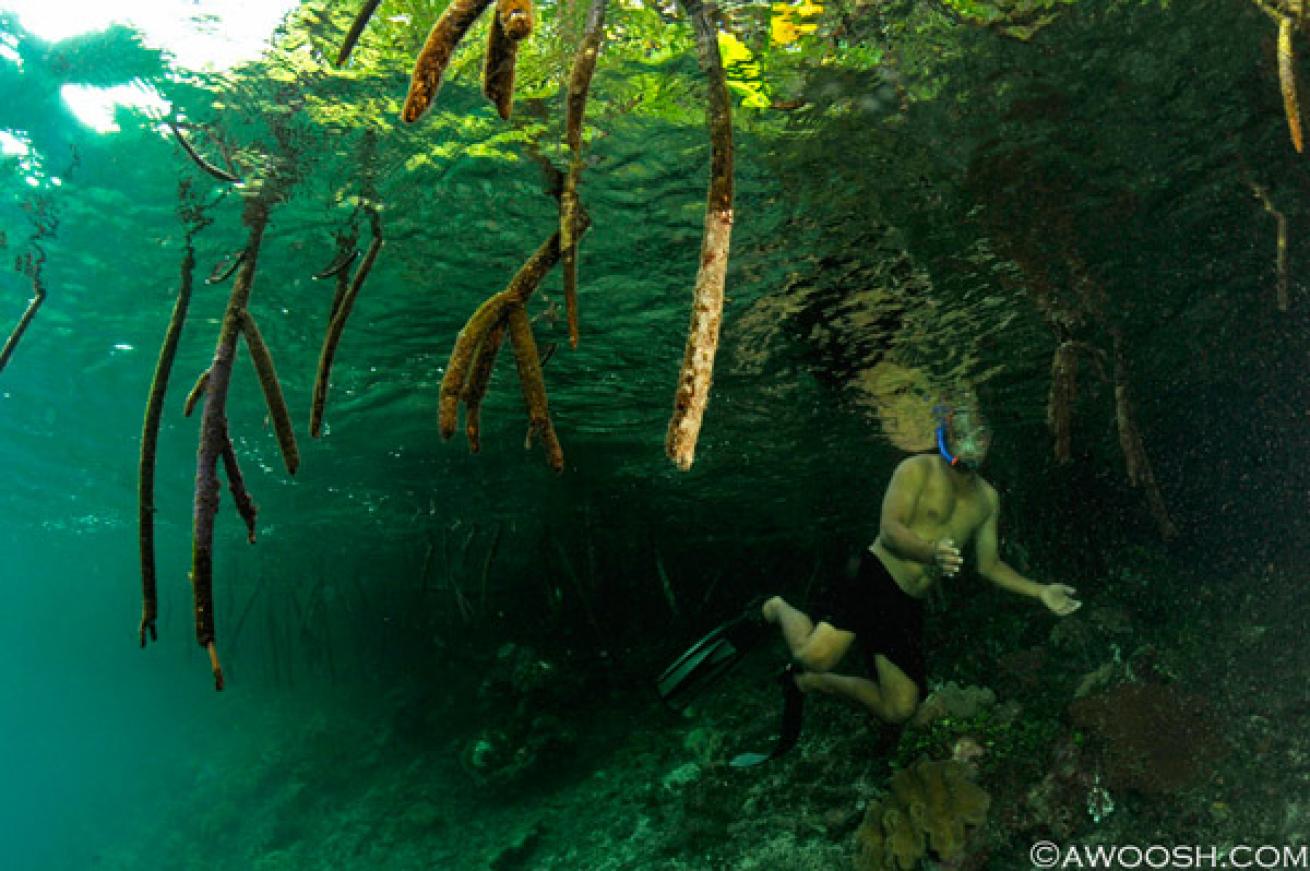
Judy GSouth Mangrove
It is a strange thing indeed seeing tree roots suspended in water, but in mangroves, this is how it grows. Mangroves are nurseries for many species of tropical fish, and this particular mangrove also had a population of Archer Fish – curious critters that send out a jet of water from their mouths to knock down flying insects on which to feed.
Three Sisters
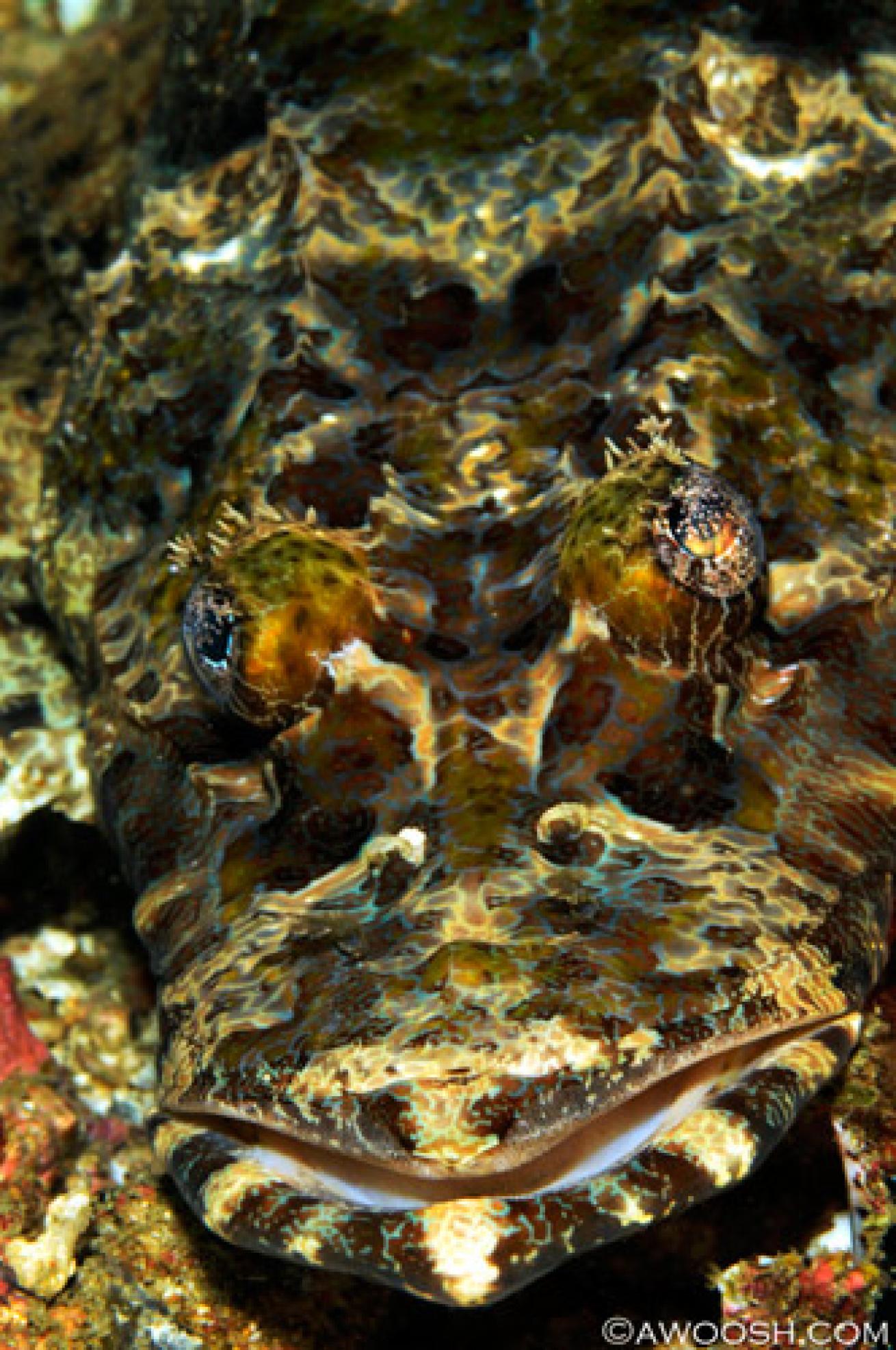
Judy GThree Sisters
A crocodile flathead fish (Cymbacephalus beauforti). This was the first of this variety of fish that I had seen, so I was thrilled to have an opportunity to photograph it. This is a bottom-dwelling fish, about 46 centimetres long, which is capable of changing its colour so it can camouflage itself on the reef. The “Three Sisters” are three islets, each of which is a gorgeous site, paved with life, as are the channels between them, where we saw this fish.
Judy is an avid underwater photographer and traveller whose work has appeared in several dive publications. Judy also shares a comprehensive dive travel and photo blog.



